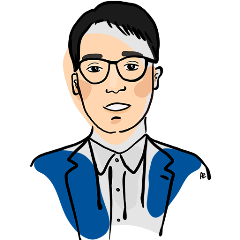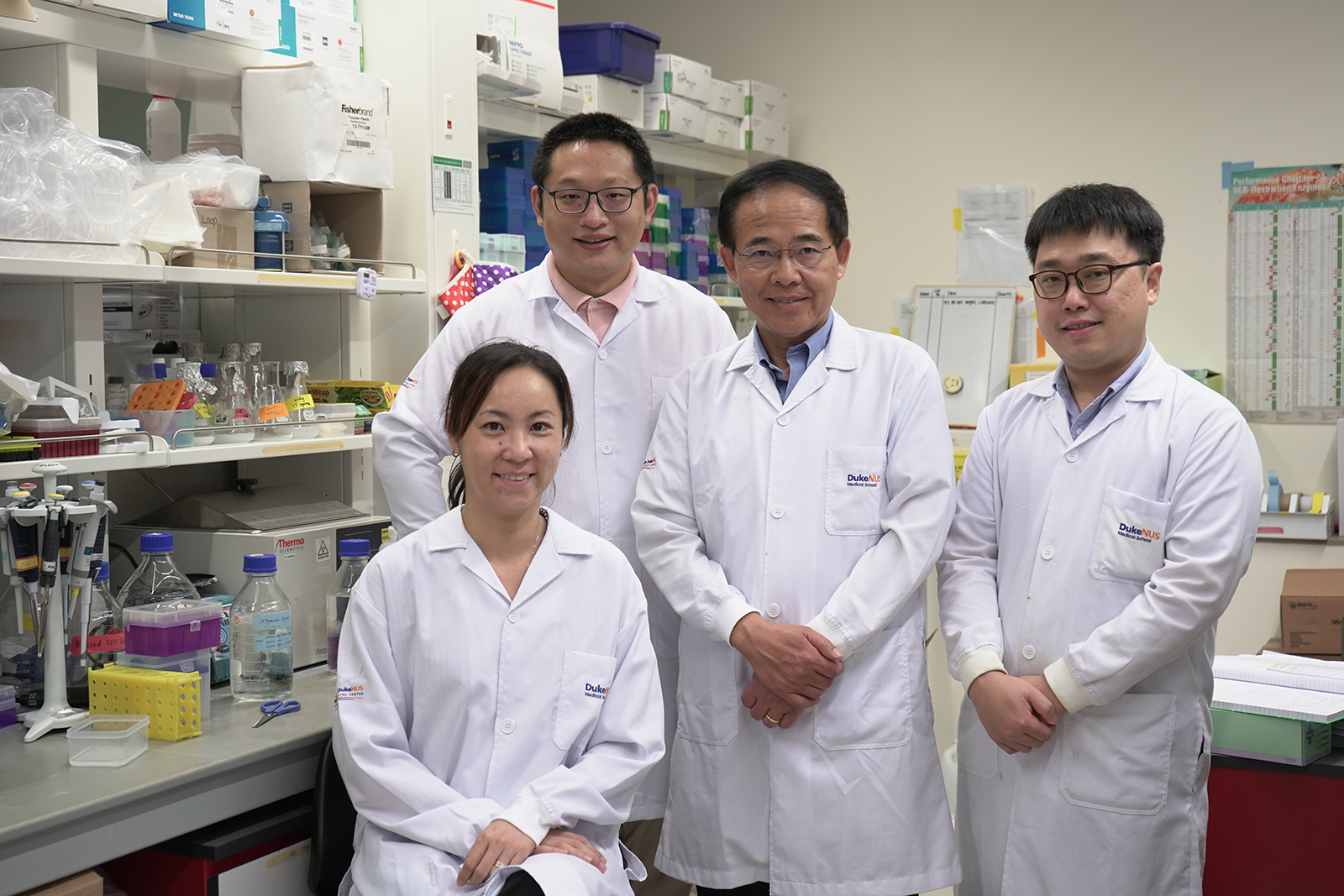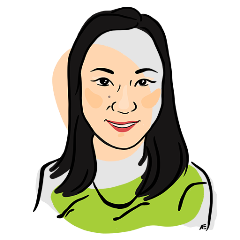 Chia Wan Ni and Tan Chee Wah, two early career researchers in the “Linfa lab”, achieve a world-first in serological testing and develop a SARS-CoV-2 test.
Chia Wan Ni and Tan Chee Wah, two early career researchers in the “Linfa lab”, achieve a world-first in serological testing and develop a SARS-CoV-2 test.
“Okay, here’s the sample. You go into BSL3 and you do the ELISA, okay?” were the instructions Dr Chia Wan Ni, then a then-research fellow, recalls receiving from her supervisor Professor Wang Linfa; instructions and experiments that would lead to a breakthrough
in Singapore’s contact tracing of SARS-CoV-2 cases.
ELISA refers to a testing technique used to detect if someone has been infected with a virus, even long after the virus has cleared. As the test needs to be done with a live virus, it can only be done in top secure biocontainment facilities that adhere
to biosafety level 3 (BSL3) standards.
And that’s where Chia was headed as she and the rest of the team from Wang’s laboratory at Duke-NUS were activated to test a particular set of patient samples.
“They want you to go in blind and just work on the sample,” adds Chia’s lab mate and then-research fellow Dr Tan Chee Wah. “After that, whether it turns out positive or negative, you’ll have seen the truth.”
This bias-free approach to testing turned up a milestone discovery. Chia and the team uncovered the missing link between two SARS-CoV-2 clusters early on during the outbreak.
“When Prof Wang explained the entire backstory, we were ‘Whoa! O-kay! This is a first in the world?’” Chia smiles, remembering.
Chia and Tan led the world in the hands-on serological testing for SARS-CoV-2. Using the samples that were sent to them of suspected cases, they searched for the presence of a particular type of antibody that can neutralise the virus. Their work enabled
contact tracers to link SARS-CoV-2 infection chains — the church clusters originated from visitors from Wuhan and totalled 31 people in the end. It also enabled the team and others to check the levels of immunity in the community as well as
develop vaccines and other therapeutics.
But working with a live virus in highly secure facilities meant that the process was slow. It was time consuming. And expensive.
Faced with this bottleneck, Wang was already thinking of how to create a surrogate test, and he would soon share his back-of-a-napkin sketches with Associate Professor Christopher Laing, School’s then-Senior Associate Dean for Innovation and Entrepreneurship.
And Tan and Chia developed this test alongside him.
These months, understandably, would become the career highlight for Chia and Tan.
All in full gear
Tan and Chia had been busy in Wang’s lab — the “Linfa lab” as it is known around Duke-NUS — since right after Chinese New Year 2020.

DRS CHIA WAN NI (LEFT) AND TAN CHEE WAH (RIGHT) WITH DR ZHU FENG (BACK) WERE MEMBERS OF THE "LINFA LAB" HEADED BY PROFESSOR WANG LINFA (CENTRE
By that time, Wang was already a member of the national COVID-19 Research Workgroup. The lab was divided into groups — one to focus on virology and another on serology — and both had to scale up their output.
“When Prof Wang said ‘Okay, we really need manpower; we need to bring a lot of manpower to cope with this’, a lot of people volunteered,” remembers Chia. “The PhD students said ‘Okay. I’ll stop doing my PhD
work. I’ll help.’”
And they did. Tan and Chia worked alongside them during morning, afternoon, and inevitably impromptu night-time shifts. The Linfa lab was in research and response mode, responding to requests from various ministries to examine suspected SARS-CoV-2
clusters while also scrutinising the virus and sharing their latest discoveries with the world.
“I had to tell my wife that I would have to work long hours, that I might need to go back to the lab on weekends,” says Tan. “She was understanding.”
Chia and Tan, all things considered, never expected to become involved with SARS-CoV-2, or indeed, any respiratory disease, so intimately. Chia’s previous work at A*STAR and the National University of Singapore focused on malaria. Tan researched
mosquito-borne flaviviruses and enteroviruses that cause hand-foot-and-mouth disease while at the University of Malaya.
They had joined the Linfa lab not long after each other, Chia in late 2016, and Tan in March 2017, where they built upon their existing specialties, but swapped virus reservoirs. Instead of mosquitoes, they would be focusing on bats and the threats
that lurk within the only flying mammal, a change Chia welcomed.

“Emerging infectious diseases are a lot closer to my heart,” says Chia. “More than a disease which doesn’t have much impact in our ‘hometown’ here.”
Shifting their focus to this particular virus, accordingly, came naturally to the pair.
“We work very well together as a team. I was mainly taking charge of all the response stuff. Chee Wah was doing all the research,” explains Chia, who became the main point of contact between the lab and external stakeholders.
Staying safe, keeping wary
The development of this new surrogate test that Wang had conceptualised would become another source of anticipation.
“It was the first time I’ve done research and come up with a [commercial] product”, says Tan. “I can’t explain the feeling.”
He laughs.
“Maybe this might happen only once in my life.”
What was certain, though, was that Tan and Chia’s work had made them the go-to source for loved ones who needed information about the pandemic. Chia became a “COVID help desk” for her extended family. She debunked rumours from
social media and explained the reasons behind different measures. Tan, similarly, had to reassure his wife about his work in the BSL3.
“My wife was worried. She asked ‘Can you catch the virus in the BSL3?’ I told her in some ways, it’s safer working in the BSL3 environment than the BSL2,” says Tan, referring to the more common type of lab, where less protective
equipment is required.
While he may be perfectly safe working in the BSL3, the world around him would have to face this outbreak. And other ones in time to come.
“The next outbreak, I feel, could likely be influenza. Or corona. Likely one of these two,” he speculates when put on the spot.
But what was amply clear to both Tan and Chia was that no one would be safe until everyone is safe.